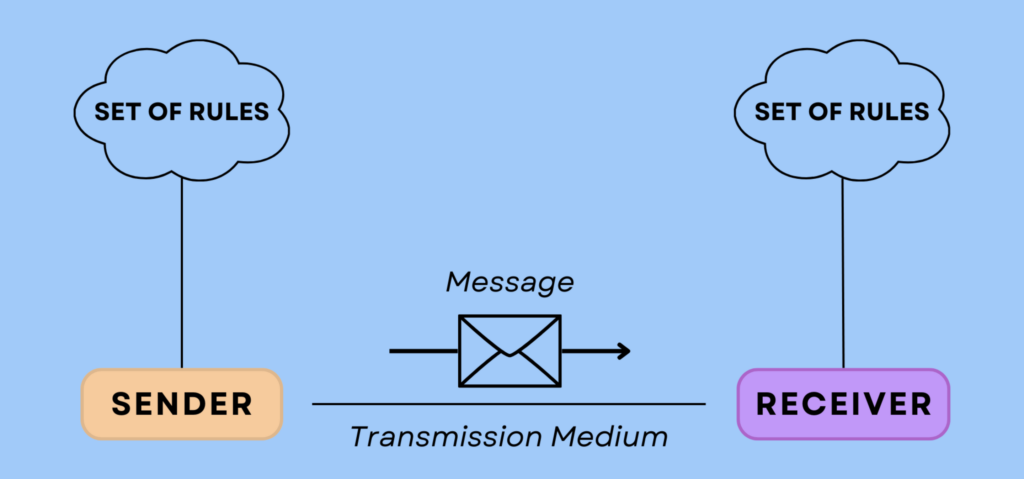In this article, you’ll learn about Components of Data Communication. For making communication possible between two deceives over a network, We need a message, sender for sending message, receiver for receiving the message, a medium for transmission and some rule and regulation which is called as protocols.
Components of Data Communication
- Message
- Sender
- Receiver
- Transmission Medium
- Protocol(Set of Rules)

I. Message. The message is the information (data) to be communicated. Popular forms of information include text, numbers, pictures, audio, and video.
II. Sender. The sender is the device that sends the data message. It can be a computer, workstation, telephone handset, video camera, and so on.
III. Receiver. The receiver is the device that receives the message. It can be a computer, workstation, telephone handset, television, and so on.
IV. Transmission medium. The transmission medium is the physical path by which a message travels from sender to receiver. Some examples of transmission media include twisted-pair wire, coaxial cable, fiber-optic cable, and radio waves.
V. Protocol. A protocol is a set of rules that govern data communications. It represents an agreement between the communicating devices. Without a protocol, two devices may be connected but not communicating, just as a person speaking French cannot be understood by a person who speaks only Japanese.